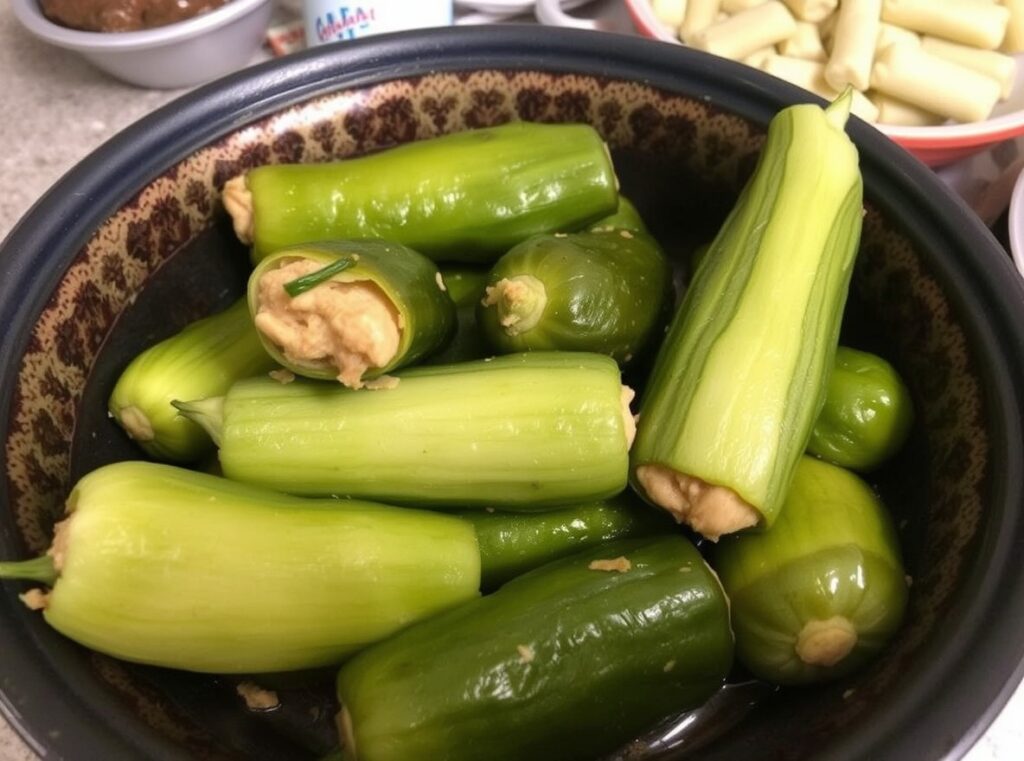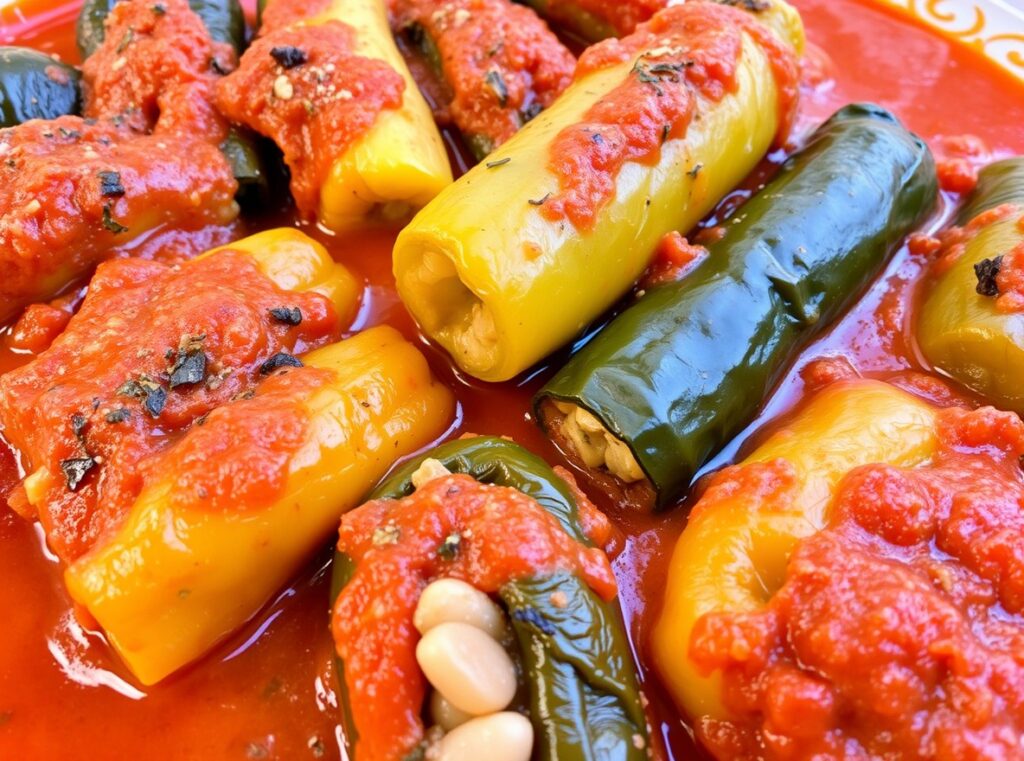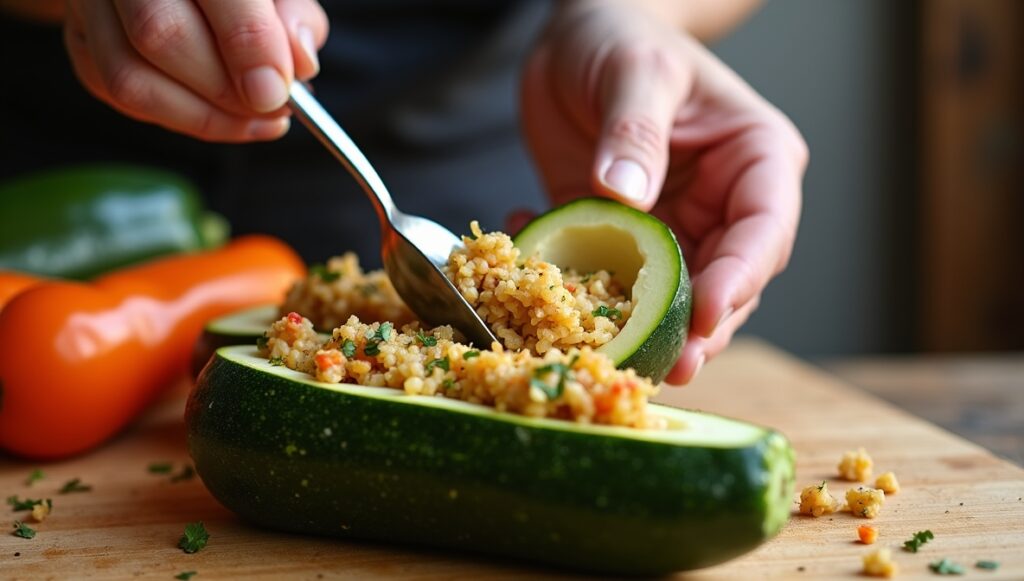Introduction
Mahshi (Stuffed Vegetables) is a beloved Traditional Egypt Food that features vegetables filled with a flavorful mixture of rice, herbs, and spices. This comforting dish is enjoyed at family gatherings, feasts, and special occasions. The unique combination of tender vegetables infused with aromatic seasonings makes it one of the Famous Foods in Egypt. Whether served as a main course or a side dish, it remains a staple of Egyptian cuisine.


History & Cultural Significance
This dish has deep historical roots, dating back to the Ottoman Empire when stuffing vegetables was a common culinary practice across the Middle East and the Mediterranean. Over the centuries, Egypt refined the dish, making it a significant part of its culinary heritage. Traditionally prepared during Ramadan, weddings, and festive celebrations, it represents warmth, generosity, and hospitality. Families often gather to prepare it together, passing down recipes through generations.
Ingredients & Regional Variations
Key Ingredients:
Vegetables: Bell peppers, zucchini, eggplant, tomatoes, cabbage, and grape leaves
Rice: Short-grain rice mixed with tomato sauce and broth
Herbs: Dill, parsley, and cilantro
Spices: Cumin, cinnamon, black pepper, and salt
Optional: Ground beef or lamb for a non-vegetarian version
Regional Variations:
In Upper Egypt, the dish is often spicier and contains more robust flavors.
Coastal cities incorporate seafood, adding shrimp or fish stock.
The Levantine regions have a similar dish called Dolma, but the Egyptian version has a distinct seasoning profile.
Cooking Process & Difficulty Level

This dish is moderately challenging to prepare, requiring patience and skill in stuffing the vegetables. However, with practice, it becomes an enjoyable cooking experience.
Step-by-Step Cooking Guide:
Hollow out the vegetables carefully to create space for the stuffing.
Prepare the rice mixture by combining rice, tomato sauce, broth, herbs, and spices.
Fill each vegetable with the mixture, ensuring it is not too tightly packed.
Arrange the stuffed vegetables in a pot, layering them with tomato sauce and broth.
Cover and simmer on low heat for about 45–60 minutes until tender.
Serve hot, garnished with fresh herbs and lemon juice.
Where to Eat Mahshi in Egypt
Abou El Sid (Cairo & Alexandria): A famous restaurant serving authentic Traditional Egypt Food.
Felfela (Cairo): A historic spot known for its delicious vegetarian version of the dish.
Local Street Vendors: Some of the best flavors can be found at small eateries in Khan El Khalili or local markets.
Pairing with Drinks & Side Dishes
Drinks: Pairs well with mint tea, hibiscus juice (karkadeh), or a refreshing lemon drink.
Side Dishes: Common accompaniments include yogurt, tahini sauce, and Egyptian baladi bread.
Fun Facts & Lesser-Known Trivia
This dish is believed to have originated from the Ottoman “Dolma,” a dish of stuffed vine leaves.
The vegetarian version is extremely popular during the fasting period in Egyptian Coptic traditions.
Some Egyptian chefs add pomegranate molasses for a tangy twist.
Health Benefits & Nutrition
High in Fiber: Vegetables and rice provide excellent fiber content, aiding digestion.
Rich in Vitamins: Packed with vitamins A, C, and K from fresh herbs and vegetables.
Vegan-Friendly: The traditional version can be made entirely plant-based.
Best Mahshi Recipe: How to Cook It at Home
Ingredients:
4 zucchini, 4 bell peppers, 4 eggplants
1 cup short-grain rice
1 cup tomato sauce
1 cup vegetable broth
½ cup chopped parsley, dill, and cilantro
1 tsp cumin, ½ tsp cinnamon, salt, and black pepper
2 tbsp olive oil
Cooking Method:
Hollow out the vegetables and set aside.
In a bowl, mix rice, tomato sauce, broth, herbs, and spices.
Stuff the vegetables, leaving space for rice expansion.
Arrange in a pot, layering with more tomato sauce and broth.
Simmer for 45 minutes, then serve hot.
Cooking Tips:
Use grape leaves for a different texture.
Add minced meat for a heartier version.
Let the dish rest for 10 minutes before serving to enhance flavors.
Global Influence & Fusion Cuisine
This dish has influenced many recipes worldwide, particularly in the Mediterranean and Middle Eastern regions. Some chefs have created fusion versions incorporating quinoa instead of rice or using exotic spices to modernize the dish.
Comparison with Similar Dishes
Dolma (Turkey & Greece): Similar concept but often includes lamb and pine nuts.
Cabbage Rolls (Eastern Europe): Uses cabbage leaves instead of zucchini or bell peppers.
Stuffed Peppers (Mexico): Uses a spicy filling with beans and cheese.

